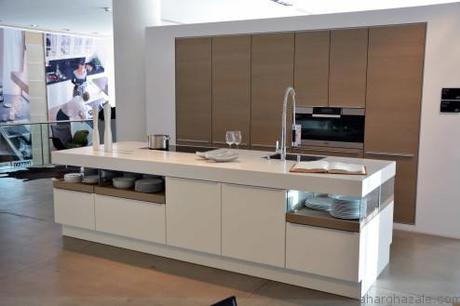
It is common practice to recommend Granite for kitchen counter tops. Why? because it is natural, durable, resists heat and scratches. What I recently discovered through several studies online, is that Granite emits Radon, a naturally-occurring radioactive gas usually found in soil and rocks. As trace uranium in soil and rock decays, it emits radon, which is a leading cause of lung cancer.
According to the Environmental Compliance Handbook (Jacob I. Bregman and Robert D. Bell), a person exposed to radon levels measured at 4 pCi/L or higher has the same risk of developing lung cancer as a person who smokes five cigarettes per day. While the EPA has stated that the greater health risk comes from radon emitted from the soil surrounding homes than from granite building materials, it “strongly recommends” that all homes be tested for radon emissions from any source.The Marble Institute commented saying ‘there are many sources of radiation in a typical home. Common items such as concrete blocks, televisions, smoke detectors — and even Brazil nuts, bananas and potatoes release measurable levels of radiation. The fact is, radiation and radon levels from other sources in the home are far more significant than what may be measured from a granite countertops.’
Whether the amount is significant or not, if you are able to get a kit to test the Radon emitted by your granite prior to purchase, that would be a better option. Kits are available at Radon.com
According to ehow, the types of granite that emit the most Radon are the following:
Crema Bordeaux: a coarse pink to red migmatite granite from Brazil. Migmatites evolve when tectonic forces squeeze and stretch molten magma as it cools slowly. The magma incorporates some surrounding rocks and deforms them. Most granites cool into uniform-sized crystals while migmatite cools into varied sizes of crystals set in long swirling patterns. Veins of black or green-black metal ores spread through the rock. This granite tested the most active in terms of radon emissions, but the emissions were less than 7 percent of EPA’s actionable radon level.
Tropic Brown: a medium-grained brown granite from Saudi Arabia with large crystals of potassic feldspars that color it brown. It is quarried in the Najran region of eastern Saudi Arabia, close to the border with Yemen. It was second in terms of emissions and contributed less than 1 percent of the EPA’s actionable concentration level of radon emissions.
Baltic Brown: a black-brown granite from Finland that is quarried close to Finland’s border with Russia. Like its Saudi Arabian counterpart, the brown color comes from crystals of potassic feldspars. Baltic Brown was third in radon emissions and contributed less than 1 percent of EPA’s limits.
Would you still go for granite if you knew of this risk?

